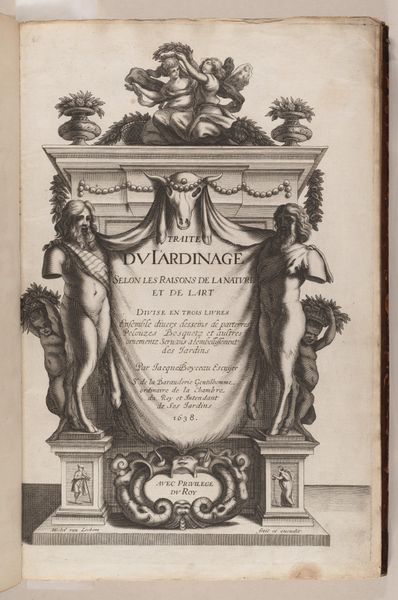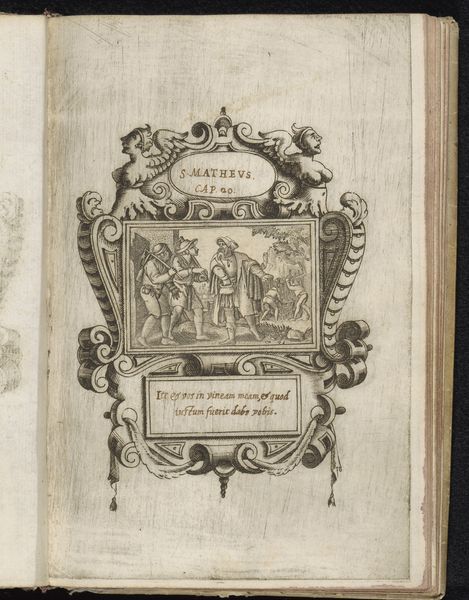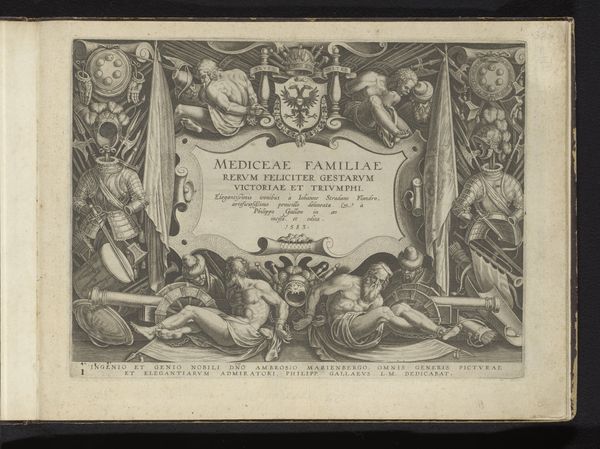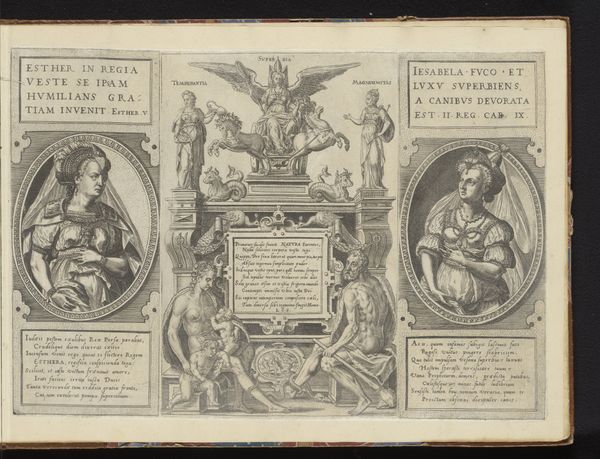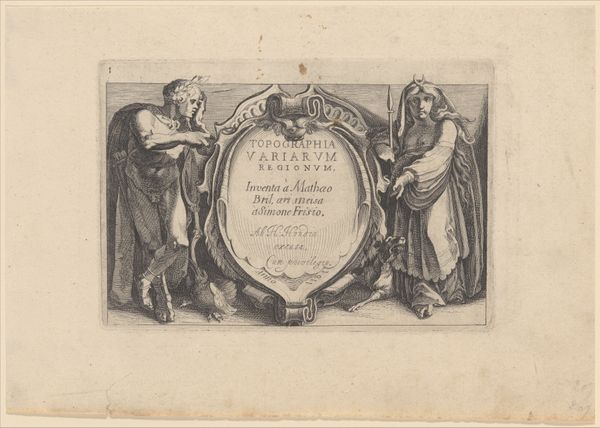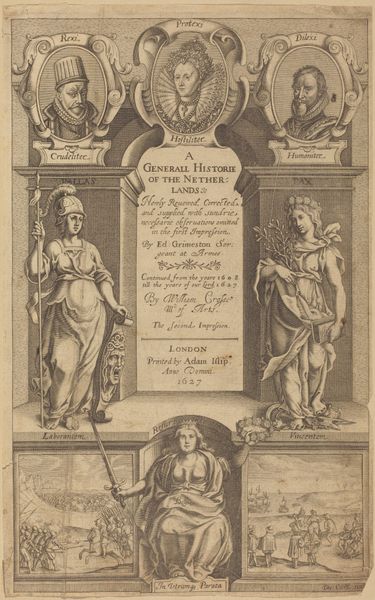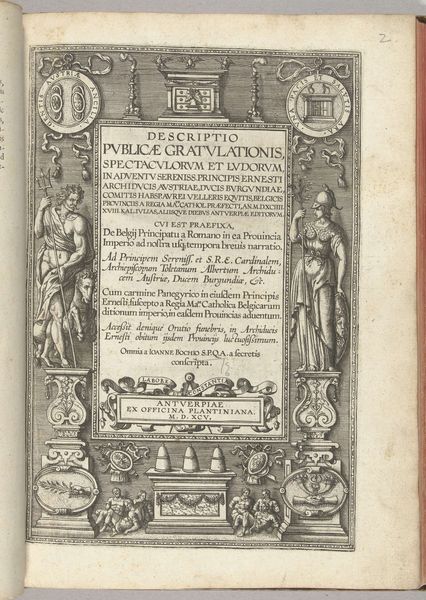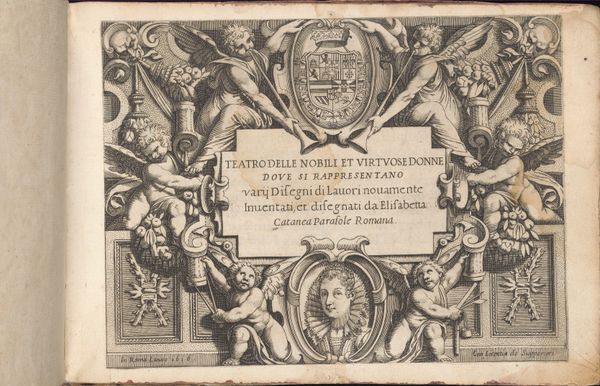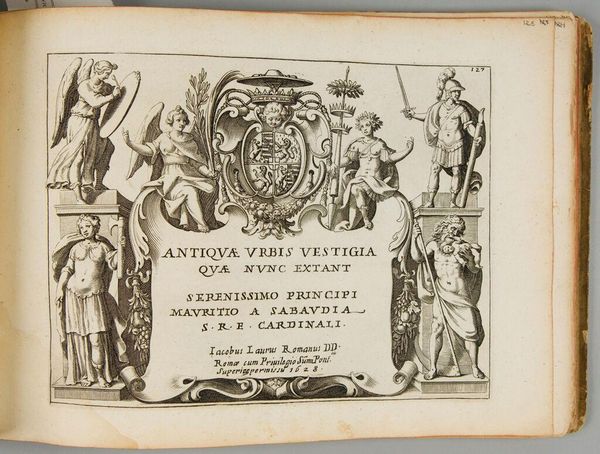
Man en vrouw, voorstellende zon en maan, aan weerszijden van een titelveld 1617
0:00
0:00
drawing, print, etching, paper, engraving
#
drawing
#
baroque
# print
#
etching
#
paper
#
engraving
Dimensions: height 147 mm, width 213 mm
Copyright: Rijks Museum: Open Domain
This engraving, created around 1614 by Crispijn van de Passe, presents symbolic figures that reach back to the dawn of human understanding. Here, we observe a man crowned with solar rays and a woman adorned with lunar crescents, representing the sun and moon. These archetypes are among humanity's earliest attempts to grasp the cosmos. The sun, often depicted as a radiant male figure, embodies life-giving energy and power, while the moon, typically feminine, symbolizes cycles, change, and the subconscious. Such symbols are not confined to a single era or culture; we see them echoed in ancient Egyptian deities like Ra and Thoth, and in Greek mythology with Helios and Selene. Even today, the sun and moon retain their symbolic weight, influencing art, literature, and our collective psyche. This enduring presence speaks to the profound, often subconscious connection we have with the natural world and the cosmos, a connection that continuously resurfaces, shaped and reshaped by the passage of time.
Comments
No comments
Be the first to comment and join the conversation on the ultimate creative platform.

